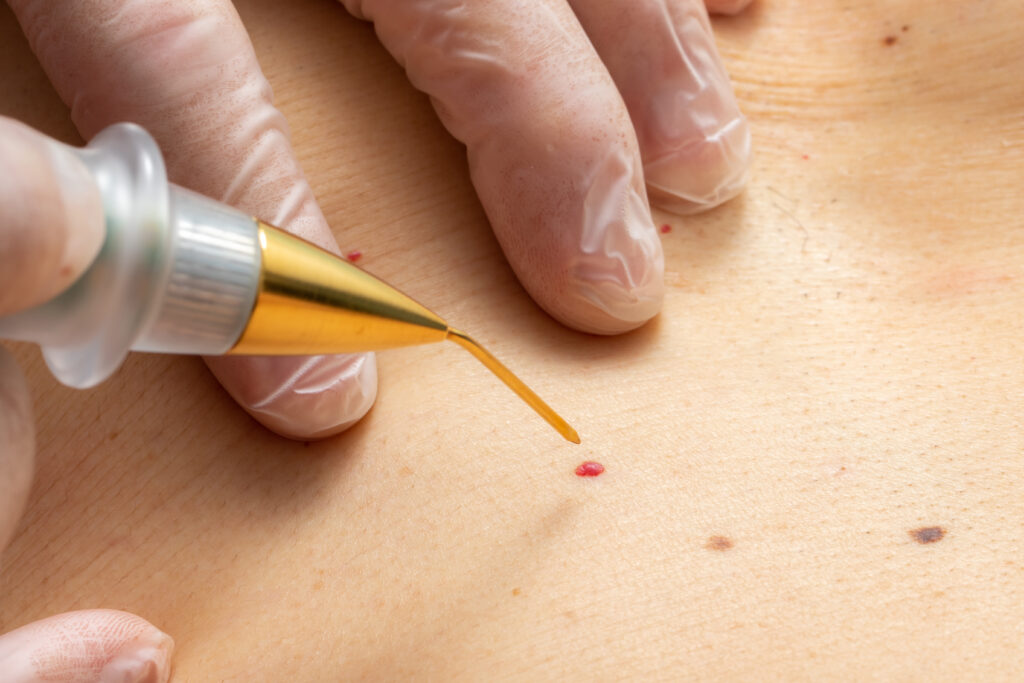If you’ve noticed little red dots on your skin that resemble freckles, you might be wondering what they are and whether you should be concerned. These red moles, also known as cherry angiomas, are a common occurrence and typically harmless. As you age, you may notice an increase in the number of these little red dots on your skin.
Let’s find out what causes these red moles, whether they require medical attention, and how to get them removed if desired.

What Are Cherry Angiomas?
Cherry angiomas are bright red, benign skin growths composed of blood vessels. These growths can start out flat and become raised over time. Cherry angiomas are common and typically develop after the age of 30. They can also occur during pregnancy and are hereditary. While they may resemble moles, cherry angiomas are not cancerous and pose no harm.
What Causes Red Moles on Skin?
Red moles, also known as cherry angiomas, are growths on the skin that are typically bright red in color and can range in size from a pinpoint to a few millimeters in diameter. While the exact cause of cherry angiomas is unknown, they are commonly associated with the natural aging process. Older individuals tend to have a higher occurrence of cherry angiomas. Genetics also play a role in the development of these growths.
Spending too much time in the sun and exposure to other environmental factors can worsen cherry angiomas or even cause more to appear over time. It is important to protect your skin from the sun and avoid other environmental factors that can contribute to the growth of cherry angiomas.

Should You Get Red Moles on Skin Checked Out?
If you notice red moles on your skin, it is important to get them checked out by a dermatologist. While they may be harmless cherry angiomas, any sudden development or change in color could indicate an underlying medical issue such as liver disease. Additionally, if the red mole is actually a mole and not a cherry angioma, it is important to rule out the possibility of skin cancer or other skin conditions.
Although the exact cause of cherry angiomas is not fully understood, it is believed that hormone changes, medical conditions, and sun exposure may contribute to their development. While these growths are generally not a cause for concern, it is always best to consult a dermatologist if you notice any unusual changes or if there is a sudden increase in the number of cherry angiomas on your skin.

How to Get Red Moles on Skin Removed
If you are experiencing discomfort or are unhappy with the appearance of a red mole on your skin, there are several in-office methods that can be used for removal. These methods include burning, freezing, shaving, electrodesiccation, or laser treatment. However, it is important to note that cherry angiomas cannot be prevented from developing, but maintaining a healthy lifestyle and staying mobile can potentially reduce the risk of their formation.
It is not recommended to try to remove red moles on your skin yourself at home, as this can cause permanent scarring and possible infection. Instead, it is best to consult with a dermatologist to determine the best course of action for removal. Once a cherry angioma develops, it tends to persist indefinitely unless professionally removed.
It is important to seek professional help for the removal of red moles on your skin to ensure safety and effectiveness. Consulting with a dermatologist can help you determine the best course of action for removal and ensure that the procedure is done safely and effectively.






